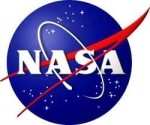Thu, Jul 15, 2010
Technological Competitions Can Award $5 Million In Prizes
 NASA announced three new Centennial
Challenges Tuesday, with an overall prize purse of $5 million.
NASA's Centennial Challenges are prize competitions for
technological achievements by independent teams who work without
government funding.
NASA announced three new Centennial
Challenges Tuesday, with an overall prize purse of $5 million.
NASA's Centennial Challenges are prize competitions for
technological achievements by independent teams who work without
government funding.
"NASA sponsors prize competitions because the agency believes
student teams, private companies of all sizes and citizen-inventors
can provide creative solutions to problems of interest to NASA and
the nation," said Bobby Braun, the agency's chief technologist.
"Prize competitions are a proven way to foster technological
competitiveness, new industries and innovation across America."
The Nano-Satellite Launch Challenge is to place a small
satellite into Earth orbit, twice in one week, with a prize of $2
million. The goals of this challenge are to stimulate innovations
in low-cost launch technology and encourage creation of commercial
nano-satellite delivery services.
The Night Rover Challenge is to demonstrate a solar-powered
exploration vehicle that can operate in darkness using its own
stored energy. The prize purse is $1.5 million. The objective is to
stimulate innovations in energy storage technologies of value in
extreme space environments, such as the surface of the moon, or for
electric vehicles and renewable energy systems on Earth.
The Sample Return Robot Challenge is to demonstrate a robot that
can locate and retrieve geologic samples from wide and varied
terrain without human control. This challenge has a prize purse of
$1.5 million. The objectives are to encourage innovations in
automatic navigation and robotic manipulator technologies.
Centennial Challenges are extended to individuals, groups and
companies working outside the traditional aerospace industry.
Unlike most contracts or grants, awards only are made after
solutions are successfully demonstrated. NASA is soliciting
proposals from non-profit organizations to manage each of the three
new competitions. Centennial Challenge events typically include
public audiences and are televised or broadcast over the Internet
via streaming video. The competitions provide high-visibility
opportunities for public outreach and education.
After the partner organizations are signed, NASA and those
organizations expect to announce challenge rules and details on how
teams may enter later this year. Proposals from organizations
interested in partnering with NASA are due by September 13.
Selection of partner organizations is expected by October 8.
More News
Aero Linx: International Federation of Airworthiness (IFA) We aim to be the most internationally respected independent authority on the subject of Airworthiness. IFA uniquely combi>[...]
Ultrahigh Frequency (UHF) The frequency band between 300 and 3,000 MHz. The bank of radio frequencies used for military air/ground voice communications. In some instances this may >[...]
A Few Questions AND Answers To Help You Get MORE Out of ANN! 1) I forgot my password. How do I find it? 1) Easy... click here and give us your e-mail address--we'll send it to you >[...]
From 2019 (YouTube Edition): Learning To Paint Without Getting Any On Your Hands PPG's Aerospace Coatings Academy is a tool designed to teach everything one needs to know about all>[...]
Also: Sustainable Aircraft Test Put Aside, More Falcon 9 Ops, Wyoming ANG Rescue, Oreo Cookie Into Orbit Joby Aviation has reason to celebrate, recently completing its first full t>[...]
 ANN's Daily Aero-Linx (05.06.25)
ANN's Daily Aero-Linx (05.06.25) ANN's Daily Aero-Term (05.06.25): Ultrahigh Frequency (UHF)
ANN's Daily Aero-Term (05.06.25): Ultrahigh Frequency (UHF) ANN FAQ: Q&A 101
ANN FAQ: Q&A 101 Classic Aero-TV: Virtual Reality Painting--PPG Leverages Technology for Training
Classic Aero-TV: Virtual Reality Painting--PPG Leverages Technology for Training Airborne 05.02.25: Joby Crewed Milestone, Diamond Club, Canadian Pilot Insurance
Airborne 05.02.25: Joby Crewed Milestone, Diamond Club, Canadian Pilot Insurance



